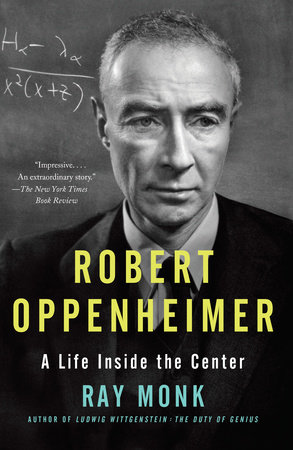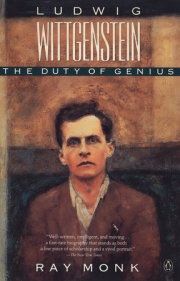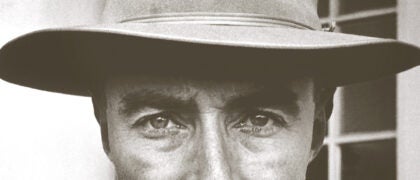Excerpted from the Hardcover edition
1
“Amerika, du hast es besser ”:
Oppenheimer’s German Jewish Background
J. Robert Oppenheimer, his friend Isidor Rabi once remarked, was “a man who was put together of many bright shining splinters,” who “never got to be an integrated personality.” What prevented Oppenheimer from being fully integrated, Rabi thought, was his denial of a centrally important part of himself: his Jewishness. As the physicist Felix Bloch, echoing Rabi, once put it, Oppenheimer “tried to act as if he were not a Jew and succeeded well because he was a good actor.” And, because he was always acting (“you carried on a charade with him. He lived a charade,” Rabi once remarked), he lost sight of who he really was. Oppenheimer had an impressive and wide-ranging collection of talents, abilities and personal characteristics, but where the central, united core of his personality ought to have been, Rabi thought, there was a gap and so there was nothing to hold those “bright shining splinters” together. “I understood his problem,” Rabi said, and, when asked what that problem was, replied simply: “Identity.”
Rabi spoke as someone who, by virtue of his background, intelligence and education, was well placed to understand Oppenheimer’s “problem.” He and Oppenheimer had a great deal in common: they were roughly the same age (Rabi was six years older), they were both theoretical physicists, were both brought up in New York City and were both descended from European Jewish families. Behind this last similarity, however, lay a fundamental difference. Rabi was proud of his Jewish inheritance and happy to define himself in terms of it. Though he had no religious beliefs, and never prayed, he once said that when he saw Orthodox Jews at prayer, the thought that came into his mind was: “These are my people.”
No such thought could have entered Oppenheimer’s mind, no matter who he was looking at. There was no group to whom he could point and say, “These are my people,” and not just because of his ambivalence about his Jewish background. It was also because that background itself, regardless of Oppenheimer’s feelings about it, could not have provided him with the sense of belonging and, therefore, the sense of identity that Rabi thought was missing in him. Rabi, despite his lack of religious beliefs, was Jewish in a fairly straightforward and unambiguous way; the Jews simply were “his people.” Theirs was the community to which he belonged. One cannot say the same about Oppenheimer. The sense in which he was Jewish, the sense in which he did--and did not--come from, and belong to, a Jewish community, is far more complicated and, as Rabi has perceptively noted, crucial in understanding the fragility of his sense of identity.
For an understanding of the elusive nature of Oppenheimer’s Jewishness, the contrast between his family background and Rabi’s is instructive. Despite their many and important similarities, and despite the fact that they grew up within a few miles of each other, Rabi and Oppenheimer were born into and brought up in families that were culturally worlds apart. Rabi was a “Polish Jew.” Born in Galicia to a poor, Yiddish-speaking family of Orthodox Jews, he came to New York as an infant and was raised, first in the crowded slums of the Lower East Side and then in a tiny apartment in Brooklyn. Oppenheimer was born not in Europe, but in New York City, to a wealthy family that had abandoned its Jewish faith and traditions a generation earlier. The bustling and crowded “Jewish Ghetto” of the Lower East Side would have seemed utterly alien to the young Oppenheimer, who was brought up in an enormous luxury apartment in the genteel Upper West Side. The family had never spoken Yiddish, and, though German was his father’s first language, it was never spoken at home.
And yet, despite regarding himself as neither German nor Jewish, Oppenheimer was seen, by Jews and non-Jews alike, as a “German Jew.” In New York in the early twentieth century the central division among the Jewish community was between, on the one hand, the German Jews and, on the other, the Polish and Russian Jews--the differences between the two groups accurately mirrored by the differences between Oppenheimer and Rabi. The German Jews, sometimes called “Uptown Jews,” were on the whole wealthier, more assimilated and less religious than their Polish and Russian counterparts, to whom they were notoriously condescending. At the time of Oppenheimer’s birth in 1904 there were more Polish and Russian Jews in New York than German Jews, but the Germans assumed leadership of the Jewish community and took it upon themselves to help “Americanize” the Russians and Poles, who reacted with resentment at what they saw as a dismissal of their religion and their customs.
What Rabi called Oppenheimer’s problem--the problem of identity--was, in fact, a problem for the entire American Jewish community, perhaps its central problem. Certainly it was the issue at the heart of the tension between the two groups of Jews in New York City. For the Russian and Polish Jews, their sense of identity was bound up with their Jewishness: their Orthodox religious beliefs, their Yiddish language and their Jewish culture and traditions. That sense of identity, that culture, however, had been abandoned by the German Jews before they even came to America.
The mass migration of German Jews to America that occurred in the mid-nineteenth century was intimately bound up with their earlier abandonment of the traditional trappings of Jewish identity. Haskalah, the Jewish Enlightenment of the late eighteenth century, was an essentially German movement, its prophet being the great Prussian Jewish thinker Moses Mendelssohn. Haskalah, which led in turn to that other essentially German movement, Reform Judaism, encouraged Jews to, literally and metaphorically, leave the ghettos in which they had been confined and embrace the modernizing ideas of the wider Western European Enlightenment. This meant using German rather than Hebrew as the language of worship, abandoning traditions and customs that served to isolate Jews from the rest of society, and reforming Jewish education so that it prepared people for the world at large rather than schooling them in a separate culture. The hope that inspired these changes was that, in return for abandoning those aspects of their culture that identified them as radically different from others, the Jews would receive from the gentile world a lifting of the discriminatory laws that affected almost every aspect of their lives, and a full acceptance as members of society with the same legal, financial and political rights as other citizens. Thus fully assimilated, Jews would no longer think of themselves as a separate race or nation, but rather as adherents of a religion. Their nationality would be German, and they would be not a bit less German for worshipping in a synagogue rather than a church.
It was the dashing of this hope that persuaded hundreds of thousands of German Jews in the middle decades of the nineteenth century to turn their backs on their home country and look to America--a country founded upon the proposition that the equality of all men and the inalienability of the right to life, liberty and the pursuit of happiness were self-evident truths--to find the freedom and equality they had failed to achieve in Germany. Thus, in the eyes of German Jews, America became not only a refuge from discrimination and prejudice, but also the national embodiment of Enlightenment ideals, the ideals of Haskalah. Many of them therefore ceased trying to become accepted as Germans and sought instead to become accepted as Americans.
“Amerika, du hast es besser.” These famous words of Goethe are contained in the poem “Den Vereinigten Staaten” (“To the United States”), written in 1827, when, as an old man, he reflected upon the advantages that youthful America had over the “Old Continent” in having no tradition, no “decaying castles,” and being therefore free from the continuous strife that comes from long memories. The image of America that Goethe’s poem conjures up is one of a tabula rasa, waiting, so to speak, to have its history written upon it. This was an image perfectly suited to arouse the interest and expectations of the German Jews, a group who longed to start afresh, free from the tensions and prejudices of the past.
And so, beginning in the 1820s, the rallying cry “On to America” echoed throughout the Jewish community in Germany. A whole movement grew up dedicated to the encouragement of migration to the United States, publicizing the financial, social and political advantages of the New World, and providing hope and support to those prepared to make what must have been an alarming as well as an exciting fresh start. In books by Europeans who had been to America, in letters to relatives from those who had migrated, and in village meetings where people gathered to hear firsthand accounts of American life from migrants who had returned to visit families, the image of America as “the common man’s utopia” was spread, inspiring more and more Jews to set sail for the United States.
A typical example of such inspirational firsthand accounts is a letter written in November 1846 by the journalist and academic Max Lilienthal, which was published in the German Jewish weekly newspaper Allgemeine Zeitung des Judenthums. Extolling “the beautiful ground of civil equality” that he had discovered in America, Lilienthal announced: “The old Europe with its restrictions lies behind me like a bad dream . . . At last I breathe in liberty . . . Jew or Christian, Christian or Jew--this old strife is forgotten, and only the man as such is respected and loved.” Encouraging others to follow his example, he urged: “Shake off the centuries-old dust of Jew-pressure . . . become a human being like everybody else.” And, he promised, in America: “Jewish hearts are open in welcome. Jewish organisations ready to help anyone. Why should you go on carrying the burden of legal exclusion?”
The number of German Jews willing and eager to “shake off the centuries-old dust of Jew-pressure” was so large that it completely transformed the American Jewish community. In 1840, there were just 15,000 Jews in the United States; by 1880, there were 280,000, most of whom were of German origin. This influx of German Jews is known to Jewish historians as the “Second Migration”--the “First Migration” being the arrival in the seventeenth century of a small community of Sephardic Jews. These were descendants of the Jews expelled from Spain and Portugal in the fifteenth century, who, by the nineteenth century, were a well-established part of American life.
These self-styled “old American Sephardic families” took pride in the fact that they had been in America for as many generations as the descendants of the Pilgrim Fathers, and tended to treat the new German arrivals with the kind of lofty disdain with which the German Jews would later treat the Russians and Poles. The first German Jews to arrive in America accepted the leadership of the old Sephardic community and even adopted the Sephardic form of worship. When the number of German Jewish migrants began to increase dramatically, however, the balance of power shifted and the German, Ashkenazi Jews replaced the Sephardim as the leaders of the American Jewish community.
The mass influx into America of Russian and Polish Jews, which took place from 1880 to 1920, formed the “Third Migration,” and was on an entirely different scale from the previous two, being measured not in tens of thousands, or in hundreds of thousands, but in millions. Roughly two and a half million Jews from Eastern Europe arrived in the United States during the Third Migration, bringing with them a very different kind of Jewish culture from that of either the Sephardim or the Germans.
The arrival of these Russian and Polish Jews was such an embarrassment to the established German Jewish community that their first reaction to it was to argue, through editorials in their newspaper, American Hebrew, and direct lobbying from their organization, the United Hebrew Charities of New York, for the introduction of tougher immigration laws. When this came to nothing and the number of Eastern European Jewish immigrants kept rising, the German Jews set up the Education Alliance, which organized Americanization programs in which the new immigrants were instructed in “the privileges and duties of American citizenship.” What drove these measures was not only the German Jews’ love of America, but also a dread of the anti-Semitism which they feared the Eastern European Jews would arouse. The Jewish historian Gerald Sorin points out: “These uptowners were very taken with Israel Zangwill’s play ‘The Melting Pot.’ They saw in it a reinforcement of their own proposed solution for the problems of downtown: the sooner immigrants from eastern Europe gave up their cultural distinctiveness and melted into the homogenized mass, the sooner anti-Semitism would also melt.”
It was a strategy that German Jews had tried unsuccessfully in Germany, but which seemed to be working in the United States. It required, however, constant vigilance with respect to “cultural distinctiveness,” a vigilance that could easily slip into the kind of self-denial of which Rabi accused Oppenheimer. One form this vigilance took was an acute sensitivity among German Jews about their names. Sometimes this led to the abandonment of German-sounding surnames, a notable example being August Schonberg, the son of an impoverished Jewish family from the Rhineland, who would become famous as the millionaire New York banker August Belmont. More often, though, it took the form of changing one’s first name and giving to one’s children names that sounded reassuringly “American.” Joseph Seligman, another millionaire New York banker, brought his brothers, Wolfgang, Jacob and Isaias, over from Germany, but on arrival they became William, James and Jesse. The names of Joseph Seligman’s children look like a roll call of American heroes: George Washington Seligman, Edwin Robert Anderson Seligman and Alfred Lincoln Seligman (evidently “Abraham” was considered too Judaic).
Of the American heroes commemorated in these names, the least well known today is undoubtedly Robert Anderson. He was a major in the U.S. army at the time of the outbreak of the Civil War in April 1861 and was involved in the opening hostilities, when Fort Sumter in South Carolina, which was then under his command, came under fire from the Confederates. For holding his ground and defending the fort for thirty-four hours Major Anderson was promoted by Abraham Lincoln to Brigadier General and became a national hero, not just for the duration of the war, but also for many decades afterward. Because of him, the name “Robert” became immensely popular. For anyone wanting to affirm the American identity of their offspring, it was the natural choice. Indeed J. Robert Oppenheimer was to like it so much that he ignored the “J” in his name and was known, by family and friends, simply as “Robert” or “Bob.” When he was asked what the “J” stood for, he would reply that it stood for nothing. In fact, as his birth certificate shows, it stands for “Julius,” his father’s name. For anyone striving to avoid “cultural distinctiveness,” the name “Robert Oppenheimer,” or even “J. Robert Oppenheimer,” had obvious advantages over “Julius Oppenheimer.”
Copyright © 2014 by Ray Monk. All rights reserved. No part of this excerpt may be reproduced or reprinted without permission in writing from the publisher.










